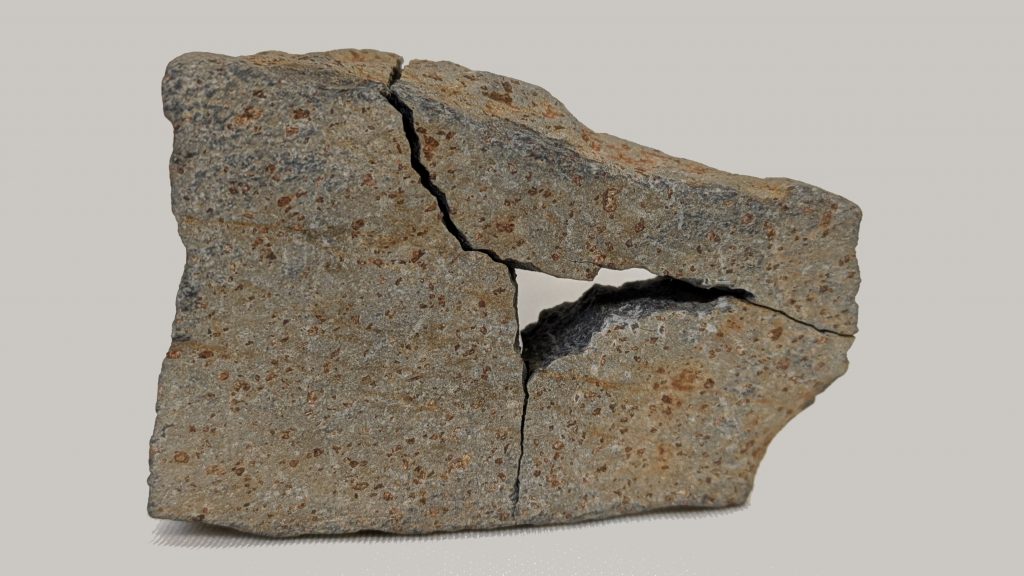Learning how to study the leopardlike spots found on both terrestrial and Martian rocks can prepare scientists for when the real samples arrive from space.
From the Journal: Review of Scientific Instruments

WASHINGTON, August 12, 2025 – In 2024, NASA’s Mars rover Perseverance collected an unusual rock sample. The rock, named Sapphire Canyon, features white, leopardlike spots with black borders within a red mudstone and might hold clues about sources of organic molecules within Mars.
Here on Earth, in Review of Scientific Instruments, by AIP Publishing, researchers from Jet Propulsion Laboratory and the California Institute of Technology used a technique called optical photothermal infrared spectroscopy (O-PTIR) to study a visually similar rock. They wanted to determine if O-PTIR can be applied to the Sapphire Canyon sample when it is eventually brought here for study.
O-PTIR uses two lasers to study a material: The first heats up the material and causes small thermal vibrations on its surface proportional to the laser’s wavelength, and the second measures the extent of these changes. Together, this creates the material’s unique chemical fingerprint.
The researchers tested O-PTIR on a basalt rock with dark inclusions of similar size to the Sapphire Canyon sample’s — which, in contrast to Perseverance’s sophisticated sample selection process, author Nicholas Heinz found purely by coincidence.
“I was hiking in Arizona, in Sedona, when I saw this rock that just didn’t look like it belonged,” he said. “I put it in my backpack and brought it back to look at.”
They aimed to see if O-PTIR could differentiate between the rock’s primary material and its dark inclusions and found it was extremely effective because of the enhanced spatial resolution of O-PTIR. Moreover, O-PTIR is a rapid technique. Each spectrum can be collected in minutes, allowing scientists to go in with a more sensitive technique to study potential areas of interest identified in more detail, such as regions containing organics.
“I hope this capability will be considered for any future material returned from Mars, an asteroid, or any other planetary surface,” said Heinz.
The team’s O-PTIR capabilities are the only of their kind available at NASA’s Jet Propulsion Laboratory and have already been used by other NASA missions — in 2024, they helped confirm the cleanliness of Europa Clipper, a mission to study one of Jupiter’s moons, prior to its launch. Heinz said that now that they’ve shown its additional benefits in applications related to Mars samples, and geology more widely, they are working with NASA’s Mars science team to test the algal microfossils typically used as Mars analogs for the rovers.
###
Article Title
Application of optical photothermal infrared spectroscopy (O-PTIR) for future returned Mars samples
Authors
Nicholas Heinz, Mark S. Anderson, Jerami Mennella, and George R. Rossman
Author Affiliations
Nicholas Heinz, Mark S. Anderson, Jerami Mennella, and George R. Rossman
